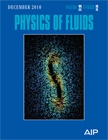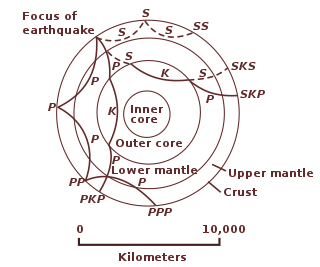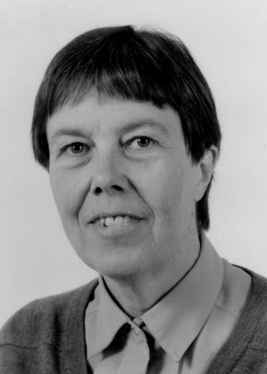
Numerical climate models use quantitative methods to simulate the interactions of the important drivers of climate, including atmosphere, oceans, land surface and ice. They are used for a variety of purposes from study of the dynamics of the climate system to projections of future climate. Climate models may also be qualitative models and also narratives, largely descriptive, of possible futures.
In fluid dynamics, a fluid parcel, also known as a fluid element or material element, is an infinitesimal volume of fluid, identifiable throughout its dynamic history while moving with the fluid flow. As it moves, the mass of a fluid parcel remains constant, while—in a compressible flow—its volume may change, and its shape changes due to distortion by the flow. In an incompressible flow, the volume of the fluid parcel is also a constant.

Fred Weldon Leslie is an American scientist who flew on the NASA STS-73 Space Shuttle mission as a payload specialist.
Nigel Oscar Weiss FRS was an astronomer and mathematician, and leader in the field of astrophysical and geophysical fluid dynamics. He was Emeritus Professor of Mathematical Astrophysics at the University of Cambridge.

Thomas R. Knutson is a climate modeller at the US Geophysical Fluid Dynamics Laboratory, a division of the National Oceanic and Atmospheric Administration (NOAA). His research covers hurricane activity, the link between climate change and hurricane incidence and intensity, and climate change detection and attribution.

Physics of Fluids is a monthly peer-reviewed scientific journal covering fluid dynamics, established by the American Institute of Physics in 1958, and is published by AIP Publishing. The journal focus is the dynamics of gases, liquids, and complex or multiphase fluids—and the journal contains original research resulting from theoretical, computational, and experimental studies.
IOP Publishing is the publishing company of the Institute of Physics. It provides publications through which scientific research is distributed worldwide, including journals, community websites, magazines, conference proceedings and books. The Institute of Physics is a scientific charity devoted to increasing the practice, understanding and application of physics. Any financial surplus earned by IOP Publishing goes to support physics through the activities of the Institute.

Isaac Meyer Held is an American meteorologist. He is a senior research scientist at the Geophysical Fluid Dynamics Laboratory. Held was elected to the United States National Academy of Sciences in 2003.
Reviews of Geophysics is a quarterly peer-reviewed scientific journal published by Wiley-Blackwell on behalf of the American Geophysical Union. The current editor-in-chief is Fabio Florindo.

Geophysical fluid dynamics, in its broadest meaning, refers to the fluid dynamics of naturally occurring flows, such as lava flows, oceans, and planetary atmospheres, on Earth and other planets.
James C. McWilliams is a professor at the UCLA Institute of Geophysics and Planetary Physics and Department of Atmospheric and Oceanic Sciences.

The following outline is provided as an overview of and topical guide to geophysics:
Stanislav I. Braginsky was a Research Geophysicist at UCLA. In 1964 he contributed to models of the geodynamo with his theory of the "nearly symmetric dynamo", published 1964. He emigrated from the Soviet Union to the United States in 1988.
David John Acheson is a British applied mathematician at Jesus College, Oxford.

Susan North Brown was a professor of mathematics at University College London and a leading researcher in the field of fluid mechanics.
Astrophysical fluid dynamics is a branch of modern astronomy which deals with the motion of fluids in outer space using fluid mechanics, such as those that make up the Sun and other stars. The subject covers the fundamentals of fluid mechanics using various equations, such as continuity equations, the Navier–Stokes equations, and Euler's equations of collisional fluids. Some of the applications of astrophysical fluid dynamics include dynamics of stellar systems, accretion disks, astrophysical jets, Newtonian fluids, and the fluid dynamics of galaxies.
Physical Review Fluids is a peer-reviewed scientific journal, published monthly by the American Physical Society. The journal focuses on fluid dynamics and also covers geophysical fluid dynamics, biofluid dynamics, nanofluidics and magnetohydrodynamics. Its lead editors are Eric Lauga and Beverley McKeon.
Fluid Dynamics Research is a bimonthly peer-reviewed scientific journal covering all fields of fluid dynamics. It is published by IOP Publishing on behalf of the Japan Society of Fluid Mechanics. The editor-in-chief is Genta Kawahara. According to the Journal Citation Reports, the journal has a 2021 impact factor of 1.500.
James F. Drake is an American theoretical physicist who specializes in plasma physics. He is known for his studies on plasma instabilities and magnetic reconnection for which he was awarded the 2010 James Clerk Maxwell Prize for Plasma Physics by the American Physical Society.







